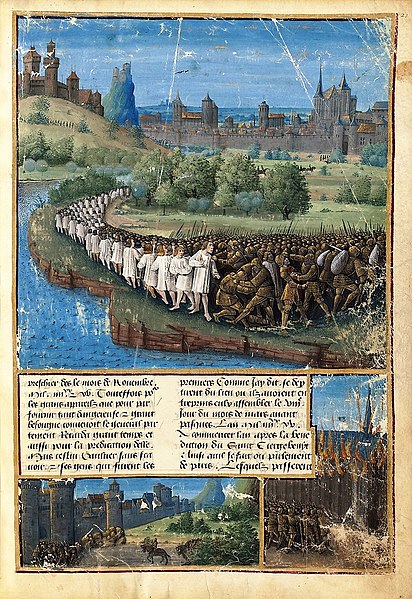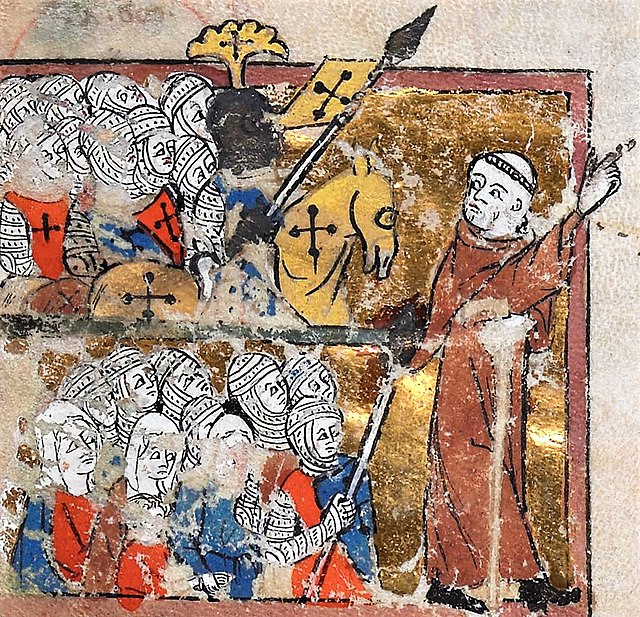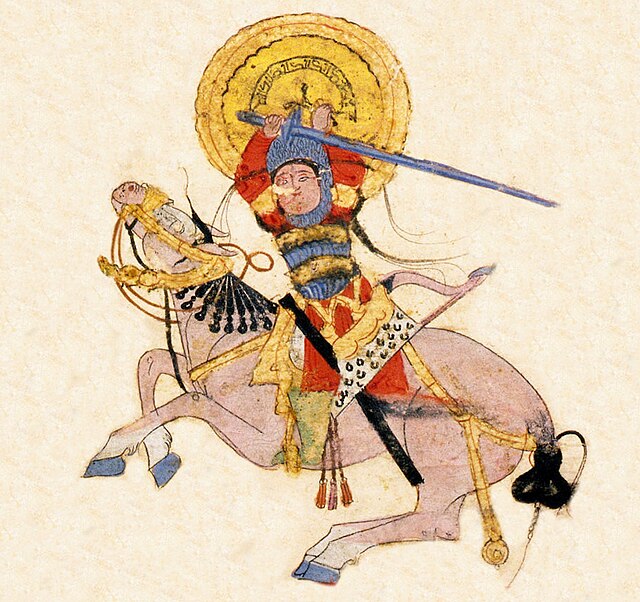The People's Crusade was the beginning phase of the First Crusade whose objective was to retake the Holy Land, and Jerusalem in particular, from Islamic rule. In 1095 the head of the Roman Catholic Church Pope Urban II started to urge faithful Christians to undertake an armed pilgrimage to Jerusalem, the People's Crusade was conducted for roughly six months from April to October 1096. It is also known as the Peasants' Crusade, Paupers' Crusade or the Popular Crusade as it was executed by a mainly untrained peasant army prior to the main church-organized crusade. It was led primarily by Peter the Hermit with forces of Walter Sans Avoir. The peasant army of this crusade was destroyed by the forces of the Seljuk Turks under Kilij Arslan at the Battle of Civetot in northwestern Anatolia.
The defeat of the People's Crusade Illustration by Jean Colombe (from Passages d'outremer)
Peter the Hermit Preaching the First Crusade – from the painting by James Archer – from Cassell's History of England, Vol. I – anonymous author and artists
Siege of Niš on 4 July 1096
The First Crusade (1096–1099) was the first of a series of religious wars, or Crusades, initiated, supported and at times directed by the Latin Church in the middle ages. The objective was the recovery of the Holy Land from Islamic rule. While Jerusalem had been under Muslim rule for hundreds of years, by the 11th century the Seljuk takeover of the region threatened local Christian populations, pilgrimages from the West, and the Byzantine Empire itself. The earliest initiative for the First Crusade began in 1095 when Byzantine emperor Alexios I Komnenos requested military support from the Council of Piacenza in the empire's conflict with the Seljuk-led Turks. This was followed later in the year by the Council of Clermont, during which Pope Urban II supported the Byzantine request for military assistance and also urged faithful Christians to undertake an armed pilgrimage to Jerusalem.
Miniature of Peter the Hermit leading the People's Crusade (Egerton 1500, Avignon, 14th-century)
Anatolian Seljuk horseman, in Varka and Golshah, mid-13th century miniature (detail), Konya, Sultanate of Rum.
Pope Urban II at the Council of Clermont. Illustration from a copy of Sébastien Mamerot's Livre des Passages d'Outremer (Jean Colombe, c. 1472–75, BNF Fr. 5594)
An illustration showing the defeat of the People's Crusade, from Sébastien Mamerot's Livre des Passages d'Outre-mer (Jean Colombe, c. 1472–75, BNF Fr. 5594)






